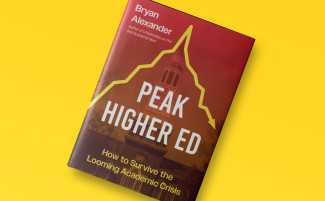
Johns Hopkins UniversityEst. 1876
America’s First Research University
The Story within a “Novel” Biology Class
Guest post by Megan Rokop Most intro biology courses get to a point where the focus turns to human systems, and the classes become more or less “an organ each day,” which involves teaching students about the proper anatomy and function of one organ at a time. Another approach—one I will describe below—takes the opposite standpoint, and starts by describing what can go wrong.We are pleased to republish geneticist Megan Rokop’s account of how she uses The Story Within:Personal Essays on Genetics and Identity to teach her introduction to biology course. This article originally appeared in the September issue of MIT STEM Pals, a newsletter sponsored by the MIT BLOSSOMS Program. At the end of this post, several The Story Within contributors share their experiences in interviews and blog posts.
Geneticists like myself get their kicks from studying what goes wrong with the human body in order to learn about what could have been going right, so we are naturally drawn to teaching from this perspective. Students (and all humans) are inherently interested in themselves, and thus their curiosity is often most piqued by what may one day “go wrong” in themselves or their friends and family members. For this reason, the standard attention-grabbers in biology class include cancer, Alzheimer’s, diabetes, etc. As teachers, we can capitalize on what grabs students’ attention, and use these conditions in order to introduce fundamental topics such as cell division, nerve cell signaling, the function of the pancreas, and so forth.
Earlier this year, I happened upon a new book, The Story Within, edited by acclaimed memoirist Amy Boesky (author of What We Have). The Story Within is a collection of 16 short non-fiction essays, each written by a different author. These authors span various ages, careers, and perspectives, but they all share one thing: either they, their parents, or their children are affected with a severe genetic disorder. Some of them have symptoms of these genetic disorders, and others do not. Some have chosen to get their DNA tested, and others have not. Some have decided to have children, and others have not. Each person recounts the choices they have made because of the disorder that affects them and their families.
The book is unlike any other book I have encountered, and it is exceptionally powerful. I was so taken by it that I decided to devote 1/3 of my biology class this semester to teaching biology concepts in the order they arise in this book. In preparation for each class period, the students read two chapters of the book. From reading the chapters, they became aware of the personal struggles of someone with a certain condition, and they clearly felt strong emotional connections to the writers and their stories.
Then, during class time, the central theme we discuss is how the disorder results because of a certain kind of mutation in a certain gene, how that mutation changes a protein product, how that protein’s function is altered, how that altered function impacts a certain cell type and thus organ function, and how that produces the symptoms of the disorder. We also talk each day about how the specific type of mutation in the gene correlates to the mode of inheritance of the disorder (i.e. dominant or recessive, X-linked or autosomal). Thus we span many levels of biology (molecules, organelles, cells, tissues, and organs) in every class.
Using this book has led us to discuss a variety of topics, from central concepts of molecular biology, to organelle function, organ function, and bioethics:- Through discussions of Huntington’s, Alzheimer’s, and schizophrenia, we have covered the brain and nerve signaling, and also the implications of choosing to get one’s DNA tested.
- Through discussions of breast cancer, we have covered the cell cycle and DNA repair.
- Through discussions of cystic fibrosis, we have covered the lungs, ion channels, and organ transplants.
- Through discussions of Duchenne’s Muscular Dystrophy and hypertrophic cardiomyopathy, we have covered skeletal and cardiac muscle function and cytoskeleton and extra-cellular matrix proteins.
- Through discussions of hereditary blindness (due to retinitis pigmentosa), we have covered photoreceptors and the retina.
- Through discussions of hereditary deafness, we have covered the inner ear, and how gap junctions allow molecules to move between cells.
- Through discussions of Fanconi’s Anemia, we have covered the blood, bone marrow transplants, and IVF and PGD (pre-implantation genetic diagnosis).
- Through discussions of Fragile X, we have covered X-linked traits and pedigree analysis.
- Through discussions of Tay Sachs, we have covered the role of lysosomes and the implications of prenatal DNA testing.
In this way, we have spanned the brain, lungs, heart, eyes, ears, blood, muscle and more, all through the attention-grabbing biographical accounts of the authors, filmmakers, advocates, genetic counselors, and others who wrote the chapters of this marvelous book.
If you would like to chat more about any of the readings, in-class activities, or assignments I am using in this class (which I entitled “Learning Biology through Reading Fiction and Non-fiction”), feel free to contact me at <[email protected]>.Megan Rokop is the Associate Director of the Honors College at UMass Boston, where she is a biology faculty member, and she is trained as a microbial geneticist.
Listen to a BBC interview with Amy Boesky and several contributors to The Story Within here. Amy Boesky’s blog post “On Collecting” can be found here. Read essayist Patrick Tracey’s account of the symposium attended by the book’s contributors here.
Praise for The Story Within:



